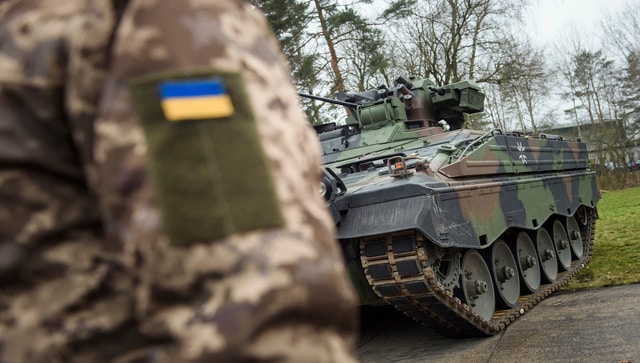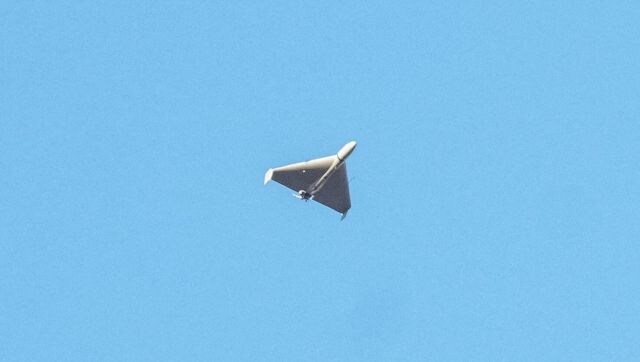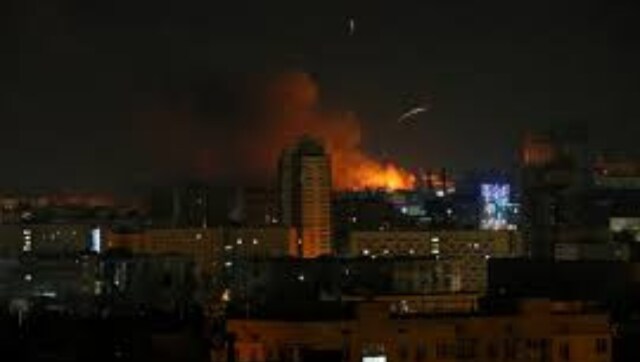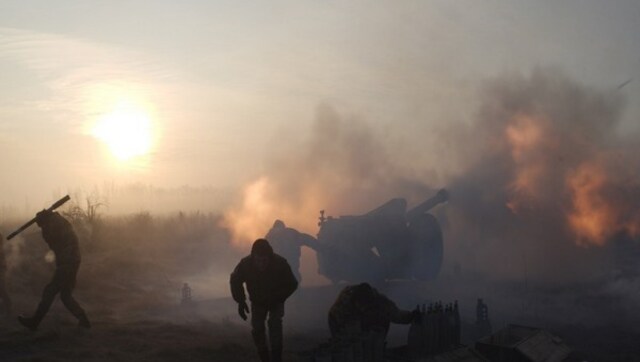What all Germany will give to Ukraine in it's latest and largest military package of $3bn
Boris Pistorius, Germany's Defence Minister, said in a statement, 'We all hope for a rapid end to this terrible war by Russia against the Ukrainian people, but unfortunately this is not in sight'

Representational image. AP
Germany on Saturday announced that it will provide Ukraine with additional military aid worth 2.7 billion euro ($3.0 billion). This is Berlin’s biggest package for Kyiv since Russia’s invasion. It also pledged further support for Ukraine as long as necessary.
Boris Pistorius, Germany’s Defence Minister, said in a statement, “We all hope for a rapid end to this terrible war by Russia against the Ukrainian people, but unfortunately this is not in sight.”
“This is why Germany will supply all the help that it can, for as long as necessary,” he said, reported AFP.
Related Articles
What all is in the package?
Leopard 1 A5 Tanks
Berlin will provide 30 Leopard 1 A5 Tanks to Kyiv. First entering service in the 1960s, it is the forerunner of the more advanced Leopard 2, which is widely used by armies across Europe. It has a high first-round hit probability with all types of ammunition by day and night and under limited visibility conditions.
It also has high accuracy and stability of adjustment, along with short preparation time to open fire.
It is a 42-ton four-person tank with a modern 105-millimeter main gun. Its steel armor is just 2.75 inches thick on the front of the turret and less than half an inch thick on the sides and back of the hull.
Gepard anti-aircraft tank
Berlin will provide 15 Gepard anti-aircraft tanks. They are also called ‘Cheetah’. Its development began in the 1960’s and entered the service in 1970’s.
It has separate search and tracking radars, which are mounted at the front rear of the turret and the tracking radar mounted at the rear front of the turret. The radars offer 360-degree scanning. The maximum rate of fire for a single gun is 550 rounds per minute.
The Gepard uses two automatic cannons to take out aerial targets. It was the first heavy weapon that Germany sent to Ukraine.
Iris-T anti-aircraft systems
The IRIS-T version costs about €140 million ($136 million), and is extremely new. The system is manufactured by Diehl Defense, based in Überlingen, southern Germany, and is meant to provide medium-range, high-altitude cover for small cities and armies.
Each system comprises three vehicles: a missile launcher, a radar, and a fire-control radar, with integrated logistics and support. The missiles, which use infrared imaging to identify targets, are said to have a range of 40 kilometers (25 miles) and a maximum altitude of 20 kilometers (12.4 miles) and come equipped with a radar with a range of 250 kilometers (155 miles). The missiles are also deployable 360 degrees around the launcher.
According to Diehl, the system is most effective as part of a “layered air defense,” in combination, for example, with the US-made Patriot PAC-3 missile defense system, which has a higher maximum altitude.
Reconnaissance drones
They are unmanned aerial vehicle (UAV), which are used for intelligence, surveillance, and target acquisition. Unlike unmanned combat aerial vehicle (UCAV), this type of system is not designed to carry aircraft ordnance such as missiles, ATGMs, or bombs for drone strikes. The main purpose is to provide battlefield intelligence.
With inputs from agencies
Read all the Latest News, Trending News, Cricket News, Bollywood News,
India News and Entertainment News here. Follow us on Facebook, Twitter and Instagram.
also read

Ukrainian drone attacked Russian government building, says Bryansk Oblast governor
The building targeted by Ukrainian drone in Bryansk Oblast was a military enlistment office, the region's governor said

Russian drone shot down over Kyiv, claims Ukraine amid widespread air raid alerts
The warnings covered the whole of Ukraine, from the capital city of Kyiv and the areas west of it to every region in the east and south to the Kherson region and the Russian-occupied Crimea. According to a Russian official stationed in Crimea, Ukraine sent more than 10 drones over the peninsula

Intensified shelling by Ukraine forces Russia to relocate 18 villages
Citing reports from the line of contact, Balitsky also said that the Ukrainian armed forces may launch a counteroffensive in the coming days if not hours



